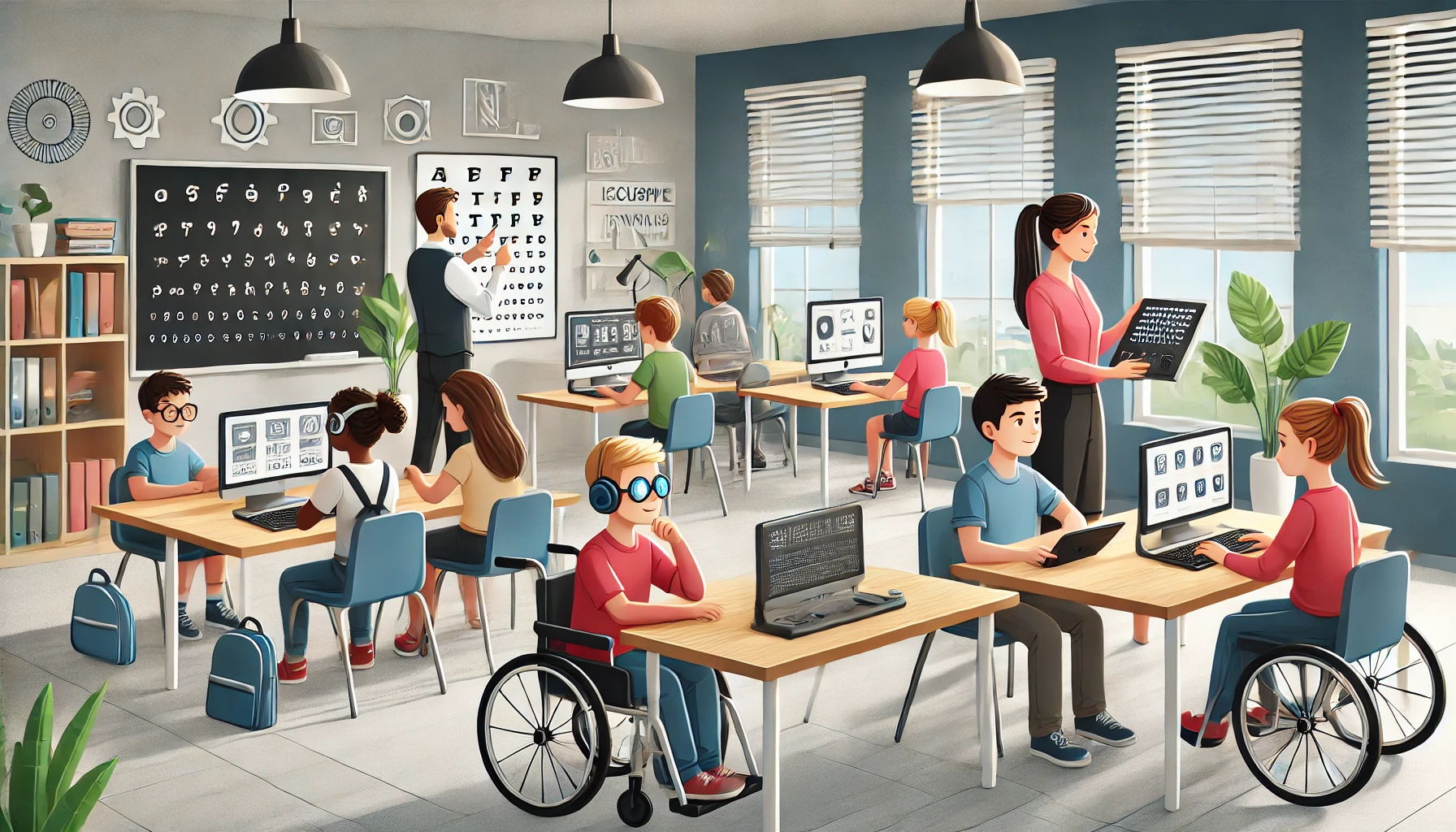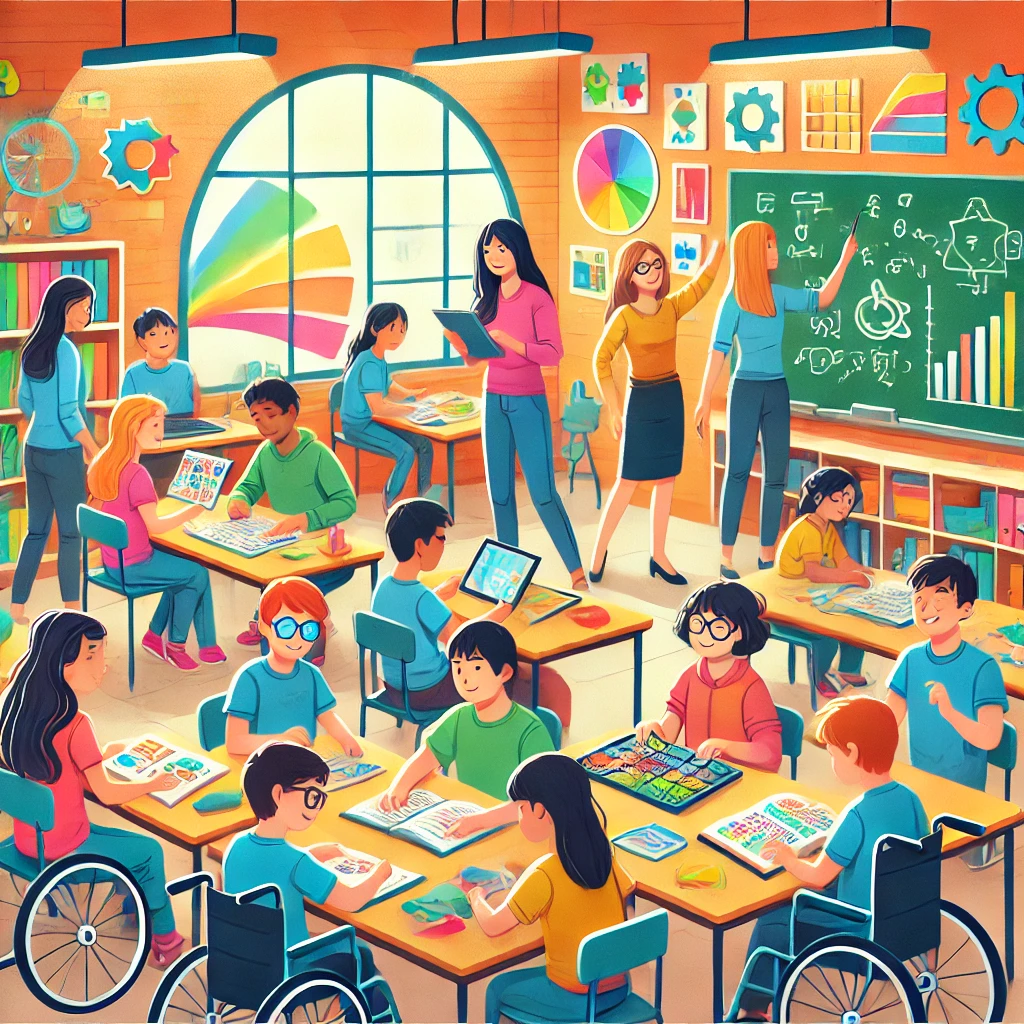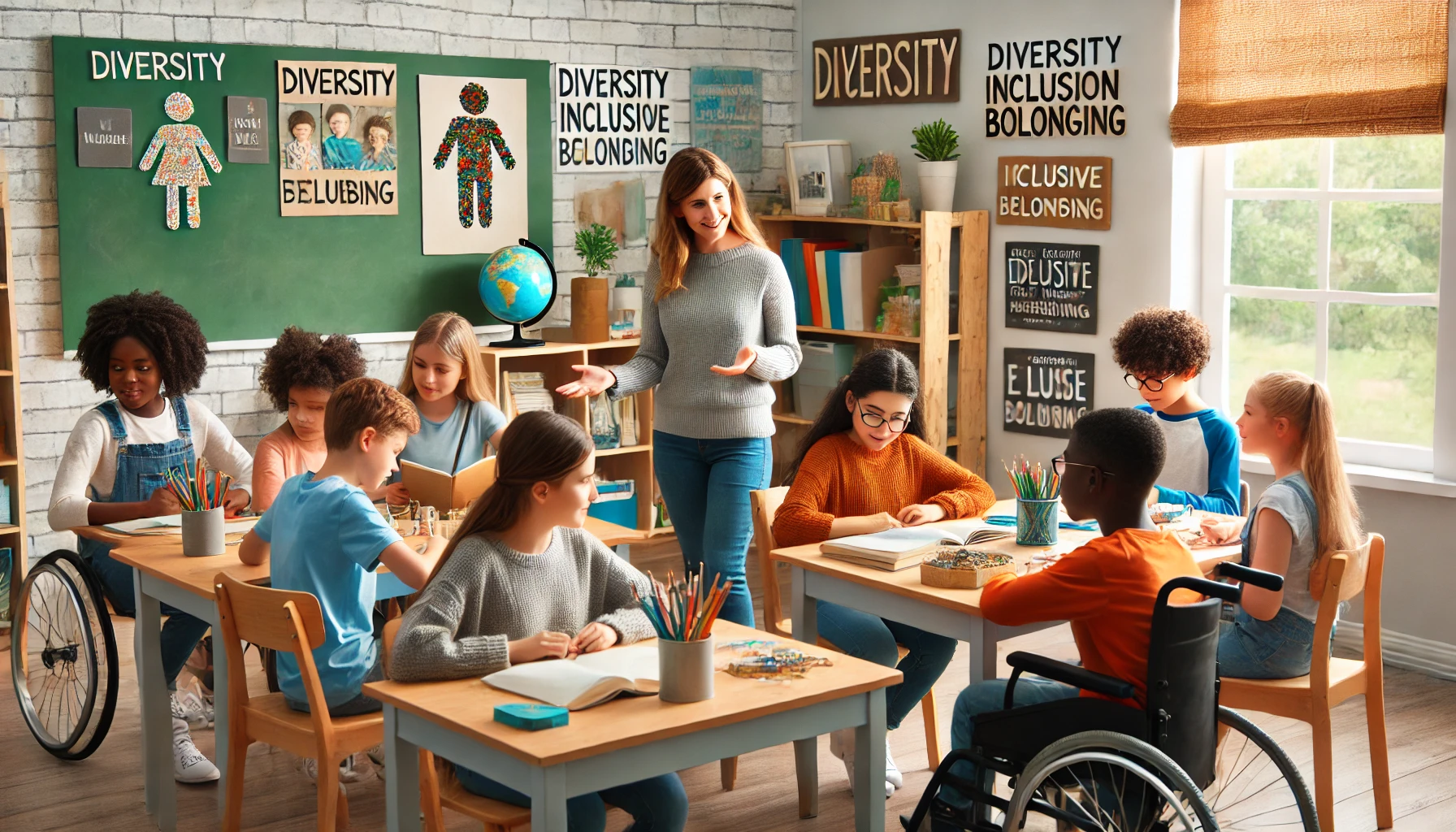Understanding Inclusive Education
Taking a look at inclusive education, it’s all about making sure everyone gets a fair shot, especially those with disabilities, by blending them into the same classrooms as kids without disabilities. This approach is all about fairness and making sure no one feels left out.
Definition of Inclusive Education
At its heart, inclusive education is about making sure students, no matter if they have disabilities or not, get the same crack at a good education. It’s about creating a classroom vibe where everyone feels welcome and their differences are not just accepted but celebrated. So, it’s not just about sitting together in a classroom; it’s about building a culture where everyone’s unique contributions are appreciated.
Principles of Inclusive Education
A bunch of core ideas hold up the idea of inclusive education, making sure it works well. These ideas are based on the thought that every kid deserves a place to learn in a way that plays to their strengths. Here’s what it looks like:
- Fairness: Making sure each student gets the help and resources they need to do well.
- Understanding Differences: Seeing differences as valuable and celebrating what each person brings to the table.
- Making Things Easy: Knocking down any hurdles that make learning hard and creating a space where everyone can learn in their own way.
- Teamwork: Encouraging teachers, students, families, and the community to work together so every student can succeed.
- Building Confidence: Helping students be their own champions, believe in themselves, and play an active role in their education.
Grasping what inclusive education is all about is super important for teachers, parents, and caregivers of kids with special needs. When we embrace inclusivity and fairness, we’re setting up schools where every student, no matter what, can flourish and meet their full potential.

Benefits of Inclusive Education
Throwing open the doors of learning to everyone offers countless perks for students with disabilities. These advantages stretch from school smarts to building social savvy and gaining skills for life.
Academic Advancements
Inclusive education sparks a learning surge for students with all kinds of needs. Mixing everyone together in one classroom creates an opportunity to learn, share and grow academically. Studies show, like those from Understood, that when students with disabilities learn in these diverse settings, they tend to skip school less, ace reading and math more, and are more likely to hit books or nail jobs after graduation.
Social Interaction and Skills Development
The magic of inclusive education really shines when it comes to making friends and boosting self-confidence and social skills. When kids with disabilities are part of the group, they engage in new interactions, learn from differences, build their self-esteem, and make friendships that might never have formed otherwise. Understood emphasizes that schools like this turn out well-rounded individuals ready to team up with anyone.
Self-Advocacy and Life Skills
Just as crucial, inclusive education helps students stand up for themselves and pick up important life skills. With tailored plans like Individualized Education Plans (IEPs) and a network of peer support, kids learn how to speak up for what they need and polish off skills that are essential for life after they leave school (Princeton Review).
Balancing book smarts, social ties, and self-advocacy, inclusive education reshapes the way students with disabilities experience learning. When parents, teachers, and caregivers support inclusivity, they open up a world where every child can blossom, no matter their abilities.
Challenges in Implementing Inclusive Education
Bringing inclusive education to life is no walk in the park. Educators, policymakers, and communities need to tackle various hurdles to offer quality learning for all students, especially those with disabilities.

Obstacles and Hurdles
The road to inclusion has its fair share of bumps and barriers. Some of the main challenges spotlighted by the Marshmallow Challenge are:
- Not many folks truly get what inclusive education really means.
- Teachers and other folks involved can be set in their ways and slow to warm up to new approaches.
- Teachers often don’t get the training they need to handle different needs in one classroom.
- Schools might not be set up to be accessible, and learning materials can be lacking.
- Not enough funding to make necessary accommodations and support available.
Facing these challenges head-on requires a mix of strategies tackling both big-picture systemic issues and individual needs. Everyone has to come together to make classrooms welcoming for all students.
Commitment and Resources
For inclusive education to really take off, schools, governments, and communities need to be fully on board. According to the Marshmallow Challenge, key points include:
- Stick With It: You need a long-term vision for nurturing an inclusive mindset and keeping the practices on track.
- Put Your Money Where Your Mouth Is: Allocating adequate funds and resources to support the changes needed.
- Teacher Training on Tap: Ensure ongoing workshops and learning to sharpen educators’ skills in handling diverse classrooms.
- Don’t Forget the Folks at Home: Getting parents and community groups involved goes a long way in driving change.
When schools commit to these areas, students with all sorts of abilities can find a place to grow and shine.
Ongoing Efforts for Success
Making inclusive education stick isn’t a one-and-done deal. It’s a process that requires constant rethinking and adapting. The efforts, as emphasized by the Marshmallow Challenge, should include:
- Watch and Learn: Continually check how things are going and see what’s working or not.
- Meet the Kids Where They Are: Be ready to adjust plans and materials based on the students’ various needs.
- Celebrate What Makes Us Different: Appreciate the strengths each kid brings to the class.
- Inclusivity Isn’t Just for Schools: Nurture a welcoming vibe within the community, too, making diversity everyone’s business.
By pushing through the rough patches, sharing resources wisely, and pledging to inclusivity, educators can help craft a learning environment where every student feels valued and engaged.
Importance of Inclusive Education
Inclusive education is all about making sure every student, no matter their differences, feels part of the school community. It helps create a classroom vibe where everyone, especially those with disabilities, can thrive. It’s like setting the stage for kids to learn, grow, and feel they belong.

Ensuring Equal Access to Education
According to the folks over at UNICEF, inclusive education is where it all starts. It’s about making sure every child gets the same shot at education. Schools knock down barriers and let kids from all walks of life learn together. This not only makes students better at school but also helps them see each other as equals and learn to get along.
Developing Skills for Thriving
Learning isn’t just about books; it’s about picking up skills for life. Inclusive education makes room for everyone’s quirks and abilities. It’s a space where personal strengths shine, and obstacles are just stepping stones. Working together in a diverse group, students pick up golden life skills like empathy, teamwork, and figuring out problems. These skills are handy both in school and out in the real world.
Fostering Community and Belonging
Building a solid sense of community and belonging is what inclusive education aims for. It’s backed by studies, like one from the National Center for Biotechnology Information, showing that when students from different backgrounds mix it up, everyone’s grades and social skills improve. A school where differences are embraced makes students feel welcome and valued. It’s all about creating solid friendships and connections within the school setting.
In schools open to everyone, students learn and grow together, celebrating differences big or small. This setup not only helps kids with disabilities but also enriches the school life for all students, pushing a culture of diversity and empowerment. Thinking of ways to make classrooms more inclusive? Check out our section on inclusive education strategies.
Strategies for Achieving Inclusive Education
Cracking open the door to inclusive education means creating a comfy spot where every kid, no matter their needs, can hit the ground running. You need a game plan that’s firing on all cylinders. So, what’s the magic recipe for making classrooms feel welcoming to every student? Let’s get to the nitty-gritty of what’s needed to get everyone learning together.
Changes at Different Levels
Making sure students with all sorts of needs fit right into the school scene takes some heavy lifting across the board:
- School Level: Schools gotta shake things up a bit – that means tweaking teaching methods, offering the right learning gear, and making sure the building isn’t an obstacle course.
- Community Level: Tackling those pesky stereotypes and giving everyone a thumbs-up for being supportive makes the neighborhood a nicer place for students with special needs.
- National Level: Government bigwigs need to align laws with the big shots like the Convention on the Rights of Persons with Disabilities. They lay down the rules to keep things fair (UNICEF).
By covering these spots, you’ll set up one inclusive classroom and not just for show.
Support Services and Resources
Having the right cheerleaders and playbooks can make a world of difference in inclusive learning:
- Training: Teachers should have access to ongoing training adventures designed to skill them up, so they’re ready for anything and everything that comes their way (College of Education – University of Illinois Urbana-Champaign).
- Resources: Pulling in the best gadgets and teamwork makes learning tick for students with different needs.
When teachers have tools in their belts, schools can turn the wheel towards a place where everyone can shine in their own way.
Enforcing Laws and Policies
Keeping things on the up and up means pulling the rules and institutions up to speed with today’s standards and mindsets:
- Legal Alignment: Make sure those in power scribble in the fine lines and ensure they’ve crossed their T’s when it comes to honoring student rights.
- Policy Implementation: The rubber hits the road when you put these policies to work, smoothing out day-to-day operations in a friendly and inclusive way.
By pumping some muscle into policies that guard student rights, schools won’t just talk the talk but walk the walk toward learning spaces where every dream can grow.
Effective Practices in Inclusive Education
To make sure every kid, especially those with extra needs, gets the right support for their school journey, teachers and caregivers need some solid tricks up their sleeves. These are all about making a learning space that’s not only welcoming but also super encouraging for every student out there. We’re talking about three big game-changers: Universal Design for Learning (UDL), Differentiated Instruction, and Individualized Education Plans (IEPs).

Universal Design for Learning (UDL)
Ever heard of Universal Design for Learning (UDL)? It’s this cool way of setting up classrooms so every student feels like the lesson is designed just for them. By weaving in UDL principles, teachers can prep the class to suit different learning styles and preferences right out of the gate. UDL is all about offering various ways to present, get involved with, and express learning to help everyone keep up and shine in the classroom.
The big idea with UDL is breaking down those learning barriers by tuning into what each student needs. By baking UDL into lesson plans and curriculums, teachers can make sure every student connects with the material in a way that matches their own strengths and hurdles. It’s an all-inclusive educational party where everyone feels successful and part of the team.
Differentiated Instruction
Differentiated Instruction is like throwing a tailor-made class fest for students. It recognizes that every learner is different, with unique skills, hobbies, and ways of learning. So, the whole “one size fits all” teaching? Yeah, not so much here.
With Differentiated Instruction, teachers mix up their teaching styles, materials, and tests, all to suit individual student needs. It lets teachers offer personalized lessons that spark interest and keep everyone learning at their own pace. Differentiated Instruction turns classrooms into spaces that not only accept but celebrate diversity, giving each student a fair shot at success.
Individualized Education Plans (IEPs)
Individualized Education Plans (IEPs) are like personalized roadmaps for students with special needs. Crafted by teachers, parents, and expert pals, these plans detail the student’s specific learning targets, must-have resources, and support. It’s all about teamwork to tailor education plans that genuinely fit unique learning situations.
Through IEPs, educators can dive deep into offering the right kind of help and kick in special strategies. These setups clearly mark out what’s needed for students to dive into the curriculum, engage in class, and hit those educational milestones. IEPs are vital in making sure each special needs student gets what they need to really bloom where they’re planted.
By mixing in Universal Design for Learning, Differentiated Instruction, and IEPs into their educational playbook, teachers can build classrooms that truly look out for every student. These methods champion fairness, open doors, and boost confidence, creating classrooms that celebrate being different and include everyone in the joy of learning.






